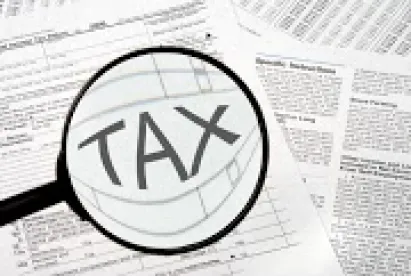The Pennsylvania Department of Revenue (the Department) recently finalized its Information Notice on sourcing of services for purposes of determining the appropriate net income and capital franchise tax apportionment factors. The guidance also addresses the Department’s views on the sourcing of intangibles under the income producing activity test. Since Pennsylvania is not a member of the Multistate Tax Compact, it is no surprise that the Department did not wait for the Multistate Tax Commission to complete its model market sourcing regulation before it issued its guidance.
Under the Pennsylvania statute (72 Pa. Stat. Ann. § 7401(3)(2)(a)(16.1)(C)), for tax years beginning after December 31, 2013, receipts from services are to be sourced according to the location where the service is delivered. If the service is delivered both to a location in and outside Pennsylvania, the sale is sourced to Pennsylvania based upon the percentage of the total value of services delivered to a location in Pennsylvania. In the case of customers who are individuals (other than sole proprietors), if the state or states of delivery cannot be determined for the customer, the service is deemed to be delivered at the customer’s billing address. In the case of customers who are not individuals or who are sole proprietors, if the state or states of delivery cannot be determined for the customer, the service is deemed to be delivered at the location from which the service was ordered in the customer’s regular course of operations. If the location from which the service was ordered in the customer’s regular course of operations cannot be determined, the service is deemed to be delivered at the customer’s billing address.
The statute generated more questions than it answered. Key terms such as “delivered” and “location” were not defined. The Department’s Information Notice provides answers to many of taxpayers’ questions. However, unlike the draft Information Notice released in June 2014, the final Information Notice shies away from providing a succinct definition of “delivery” and resorts to defining the term through various examples. (For our coverage of the Department’s draft Information Notice, click here.) However, the Information Notice does define “location” stating that “location” generally means the location of the customer and, thus, delivery to a location not representative of where the customer for the service is located does not represent completed delivery of the service.
The Information Notice is chock full of examples to guide taxpayers. The Department’s views relating to various scenarios when services are performed remotely on tangible personal property owned by customers are of interest. If a customer ships a damaged cell phone to a repair facility that repairs and returns it, the Department deems the service to be delivered at the address of the customer. Contrast that with a situation when a customer drops a car off for repair at a garage and later returns to pick it up. One may conclude that the service should also be deemed to be delivered at the address of the customer. However, the Department deems the service to be delivered at the address of the garage. The only significant difference in the two examples is that the customer picks up the tangible personal property instead of having it delivered, indicating that the Department will strictly apply its view that delivery occurs at the location of the customer at the time the service is actually transferred to the customer (i.e., “the location where the customer for the service resides or is located”).
The Department also addresses electronic delivery of services and notes that apportionment of receipts from those services to locations in Pennsylvania and one or more states may be accomplished by using IP address records or other network data where individual street addresses are lacking (provided that the data corresponds reasonably well to locations where the data is actually delivered). Interestingly, the Department’s guidance also provides that delivery of certain electronic data services to a server, “the cloud” or another data storage device does not constitute delivery of those services; those services are considered delivered to the location of the user.
In those cases where the user of an electronically-delivered service is both in Pennsylvania and in at least one other state, the Department directs taxpayers to source the receipts from that service among the states in a “reasonable” and proportionate manner considering such factors as: (a) usage of the service in each state; (b) the number of recipients in each state; or (c) the value of the service consumed in each state. The Information Notice does not contain any guidance regarding how a taxpayer should measure “usage” or “value” of the service consumed in the state or how to determine whether a “recipient” is in a state. This also raises a number of compliance questions, as service providers may not have information about the customer’s usage, value consumed or recipients in each state in its books and records. We hope that Pennsylvania will allow taxpayers to develop a “reasonable” sourcing method using other factors and information that is available in a taxpayer’s books and records kept in the regular course of business.
However, taxpayers should proceed with caution when selecting a “reasonable” sourcing method. The Information Notice further provides that to the extent a taxpayer must apportion receipts from a service among various states based on “expected usage” or “actual usage” or “value of the usage,” the taxpayer must “be consistent from year-to-year by continuously using a single selected method for those receipts in all subsequent years.” Thus, like other market-sourcing states (e.g., California), it appears that Pennsylvania will “lock” a taxpayer in to a sourcing method once used. Taxpayers should carefully consider their alternatives when developing and selecting a “reasonable” method to apportion service receipts among various states.
Finally, while not the main focus of the guidance, the Information Notice contains the Department’s interpretation (as previously articulated in the draft guidance) of the income-producing activity test for income from intangibles. Income from intangibles continues to be apportioned to Pennsylvania under the traditional costs of performance method. Consistent with the draft Information Notice, the Department indicates that income-producing activities are identified at the transaction level, rather than the operational level. The Department essentially converts the costs of performance rule to a market-based sourcing rule by indicating that the performance of the income-producing activity occurs when the performance is accomplished or fulfilled. The Department’s example relating to franchisees makes it clear that the Department will employ a market approach when sourcing income from intangibles. This tortured interpretation and application of the cost of performance rule may be subject to challenge. If the Pennsylvania legislature intended for taxpayers to source receipts from intangibles using market-based principles, it would have included receipts from intangibles within the scope of the recently adopted market-based sourcing regime applicable to services.
While Pennsylvania’s guidance is helpful, uniformity is probably a pipe dream as states continue to forge their own path for market sourcing. Nevertheless, the Multistate Tax Commission’s Uniformity Committee is continuing with its project to develop model market sourcing rules and recently voting, as predicted, to utilize the lengthy, complex and cumbersome Massachusetts market sourcing rules as the base for its own model language.




 />i
/>i
